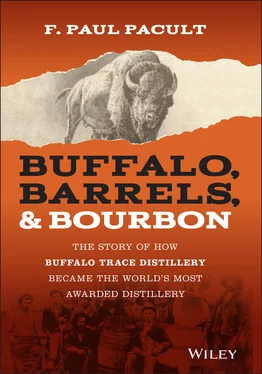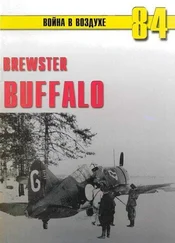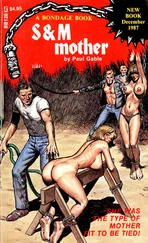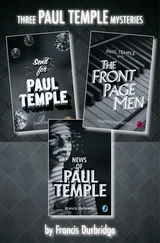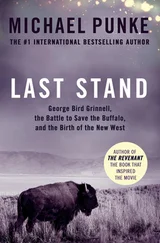F. Paul Pacult - Buffalo, Barrels, & Bourbon
Здесь есть возможность читать онлайн «F. Paul Pacult - Buffalo, Barrels, & Bourbon» — ознакомительный отрывок электронной книги совершенно бесплатно, а после прочтения отрывка купить полную версию. В некоторых случаях можно слушать аудио, скачать через торрент в формате fb2 и присутствует краткое содержание. Жанр: unrecognised, на английском языке. Описание произведения, (предисловие) а так же отзывы посетителей доступны на портале библиотеки ЛибКат.
- Название:Buffalo, Barrels, & Bourbon
- Автор:
- Жанр:
- Год:неизвестен
- ISBN:нет данных
- Рейтинг книги:3 / 5. Голосов: 1
-
Избранное:Добавить в избранное
- Отзывы:
-
Ваша оценка:
- 60
- 1
- 2
- 3
- 4
- 5
Buffalo, Barrels, & Bourbon: краткое содержание, описание и аннотация
Предлагаем к чтению аннотацию, описание, краткое содержание или предисловие (зависит от того, что написал сам автор книги «Buffalo, Barrels, & Bourbon»). Если вы не нашли необходимую информацию о книге — напишите в комментариях, мы постараемся отыскать её.
is a compelling must-read.
Buffalo, Barrels, & Bourbon — читать онлайн ознакомительный отрывок
Ниже представлен текст книги, разбитый по страницам. Система сохранения места последней прочитанной страницы, позволяет с удобством читать онлайн бесплатно книгу «Buffalo, Barrels, & Bourbon», без необходимости каждый раз заново искать на чём Вы остановились. Поставьте закладку, и сможете в любой момент перейти на страницу, на которой закончили чтение.
Интервал:
Закладка:
Following days of slow exploration negotiating the numerous blind twists and hairpin turns of the Kentucky River, the McAfees and Taylor on July 16 waded across the shallows, probably a sandbar, to a low-banked spot that was doubtless a broad, beaten-down buffalo trace. The men hiked up the gentle incline through billowing clouds of fine dust to view an elevated bottomland pasture that was fragrant with white clover, bluegrass, and buffalo grass. This locale would later become the settlement of the city of Frankfort. Using the day's topographers' tools, primarily compasses and Gunter's chains, the legally recognized metal-linked measuring devices, James and Robert McAfee and Hancock Taylor surveyed plots of land in sizes of hundreds of acres for the future settlement of the McAfee family in what was then still considered Fincastle County, Virginia.
What they didn't know in the sweaty mid-July heat and humidity of 1773 was that their comrade, Hancock Taylor, would one year later, in late July 1774, be shot by hostile Native Americans and die of his wounds on August 1. Taylor in 1774 was, like Thomas Bullitt, surveying for the Ohio Land Company. He was surveying near the great buffalo trace when the rifle shot that would kill him rang out from among the woodland shadows. Taylor's cousin, Willis Lee, accompanied him on that Kentucky River survey. With Willis Lee's initial presence in 1774 at that precise location, the course of that site's history would forever be altered. One year later, in 1775, Willis Lee and his brother Captain Hancock Lee III, a civil engineer, plotted out the first mappings of what would become Leestown.
The Birth of Leestown and the Gift of “a Rattlesnake skin”
The family roots of brothers Hancock III and Willis Lee, the founders of Leestown, are believed to go back to the time of William the Conqueror in eleventh-century Europe. One family account, recorded in 1903 in the Register of the Kentucky State Historical Society , claims that Launcelot Lee of Lourdes, France, “…was a trusted officer of William the Conqueror when he went on that wonderful free-booting [looting] expedition to England.” 6 Most probably in the late 1600s or early 1700s, Launcelot Lee's descendants made their way from Great Britain to the New World, settling in Northumberland County, Virginia. Existing historical records do not disclose whether they “wonderfully free-booted” across the Atlantic Ocean. The eighteenth-century Lee brothers were the offspring of Hancock II and Mary Willis Lee.
Brothers Hancock and Willis Lee were hardly the first colonial land speculators to set foot upon the great buffalo trace crossing site, as various accounts show that other adventurers preceded the Lees across its shoals. They were the pioneers, however, whose reconnoiters bore the most fruitful consequences. The great buffalo trace crossing was one of the few low spots along the otherwise steeply banked Kentucky River, making its location advantageous. A topographical assessment dated from 1794 confirmed this, saying, “The banks of Kentucky River are remarkably high; in some places 300 and 400 feet, composed generally of stupendous perpendicular rock; the consequence is, there are few crossing places; the best is at Leestown…” 7
Among the earliest Euro-American surveyors to disturb the ankle-deep dust of the great buffalo trace were the previously cited Dr. Thomas Walker and Christopher Gist, who in 1750–1751 visited the Bluegrass on behalf of the Ohio Land Company. The breakout in 1754 of the French and Indian War, with the British combating the French and their native tribal allies for nine blood-soaked years, made exploratory excursions through Fincastle County hazardous up to the mid-1760s. Other pre–Lee era explorers to pass along this route included fur traders and friends John Findley and Daniel Boone in 1766–1767. By 1770–1772, the Shawnee and Cherokee hunting parties that routinely used the crossing encountered, with disturbing regularity, the footprints made by colonials' leather boots. Yet the dogged persistence of the Euro-Americans to explore and settle the Bluegrass continued in the same vein as a relentless horror film monster that just keeps coming, no matter how many times it is blasted with gunfire.
In June of 1774, former Pennsylvanian James Harrod, accompanied by 37 men, founded Harrods Town (the name was later changed to Harrodsburg), 39 miles to the west of the Kentucky River. Harrodsburg was the initial stockade community to be founded in Kentucky. Less than one year later in April 1775 at a site located 48 miles to the east of Harrodsburg, a group of 30-plus axmen, led by Daniel Boone, established Fort Boone, later renamed Boonesborough. This settlement was established after the troop hacked a trail through the woodlands with a starting point at Long Island of the Holston in eastern Tennessee. Likewise in 1775, Benjamin Logan founded St. Asaph (a.k.a. Logan's Fort and later to become Stanford, Kentucky) situated to the south of Leestown by roughly 60 miles. In 1776, the Virginia legislature introduced the wonderfully named Corn Patch and Cabin Rights Act that promised ownership of 400 acres in the untamed District of Kentucky to anyone willing to brave the weeks'-long journey to erect a log cabin, cultivate corn in Virginia's westernmost region, and survive the attacks by tribal war parties.
British explorer Nicholas Cresswell provided one of the more striking accounts of life on the Kentucky River through his daily journal, written in the years 1774–1777. In several passages from 1775, Cresswell addressed the presence of the Lee brothers in the vicinity of the site of present-day Buffalo Trace Distillery. Cresswell's account on May 23, 1775, reads as follows, “Proceeded up the [Kentucky] River, found several rapids which obliged us to get out and haul our vessel up with ropes. The current stronger than yesterday. Saw several roads that crossed the River which they tell me were made by the Buffaloes going from one lick to another. (These licks are brackish or salt springs which the Buffaloes are fond of.)”
The next day, May 24, Cresswell wrote, “Camped at a place where the Buffaloes cross the River. In the night were alarmed with a plunging in the River … found one of our Canoes that had all our flour on board sunk … It was done by the Buffaloes crossing the River …” Then on Sunday, June 11, 1775, Cresswell reported, “This morning killed a Buffalo Cow crossing the River. Fell down to Elkhorn Creek … Found Captn. Hancock Lee camped at Elkhorn, surveying land … I believe the land is good in general, through the whole track, with several salt springs as I am informed. An immense number of Buffaloes frequent them. Buffaloes are a sort of wild cattle but have a large hump on the top of their shoulders all black, and their necks and shoulders covered with long shaggy hair with large bunches of hair growing on their fore thighs, short horns bending forward, short noses, piercing eyes and beard like a goat … They do not roar like other cattle, but grunt like hogs. Got a large pine canoe out of some drift wood with great labour … Excessively hot.”
Finally on Monday, June 12, Cresswell wrote, “Went to Captn. Lee's camp, who treated me very kindly with a dram of Whiskey and some bread, which at this time is a great luxury with me. Captn. Lee's brother [Willis] gave me a Rattlesnake skin about four feet long.” 8 Presumably, Lee had, of course, carried the whiskey from his starting point in Virginia and had not distilled it while on the road.
Hancock Lee's camp on Elkhorn Creek was but four miles as the crow flies east of the great buffalo trace crossing on the Kentucky River. Soon after their encounter with Nicholas Cresswell, he and Willis turned their attention back to the crossing site to plot their own family settlement. A deputy surveyor, George Rogers Clark, who worked under Captain Hancock Lee described the site with obvious gusto in a letter, dated, “Lees Town, Kentucke, July 6th, 1775,” to his brother Jonathan that said, “… A richer and more beautiful country than this I believe has never been seen in America … We have laid out a town seventy miles up ye Kentucke where I intend to live, and I don't doubt that there will be fifty families living in it by Christmas.” 9 From this and other descriptions of the crossing, it is simple to understand why the Lees, following the surveys of the McAfees and Hancock Taylor two years earlier, decided to build their initial log lean-tos and storage shelters right there at that spot. “Lying in a sharp bend of the river, near a shallow ford of shelving rock, with a spacious sandy beach on which to land and load or unload canoes and other boats, and with never-failing springs of cold, pure water near at hand, with a large natural meadow in easy reach and a rich bottom of level land sufficiently extensive to provide the settlers with an abundant supply of corn, and with broad buffalo roads radiating to the East and West, it is by no means surprising that this particular spot had attracted the eye of Robert McAfee and Hancock Taylor and was afterwards chosen by Hancock Lee as the site for his town,” addressed Kentucky historian Judge Samuel M. Wilson in his remarks at the 1931 dedication of a marker at the Leestown site. Wilson's speech, titled, Leestown – Its Founders and Its History, was recorded in the Register of the Kentucky State Historical Society. 10
Читать дальшеИнтервал:
Закладка:
Похожие книги на «Buffalo, Barrels, & Bourbon»
Представляем Вашему вниманию похожие книги на «Buffalo, Barrels, & Bourbon» списком для выбора. Мы отобрали схожую по названию и смыслу литературу в надежде предоставить читателям больше вариантов отыскать новые, интересные, ещё непрочитанные произведения.
Обсуждение, отзывы о книге «Buffalo, Barrels, & Bourbon» и просто собственные мнения читателей. Оставьте ваши комментарии, напишите, что Вы думаете о произведении, его смысле или главных героях. Укажите что конкретно понравилось, а что нет, и почему Вы так считаете.
